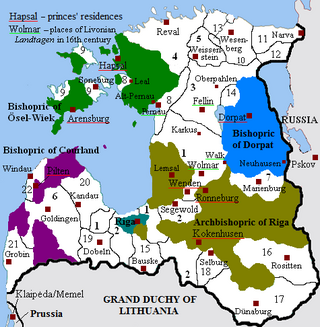
Livonia or in earlier records Livland, is a historical region on the eastern shores of the Baltic Sea. It is named after the Livonians, who lived on the shores of present-day Latvia.

The Teutonic Order is a Catholic religious institution founded as a military society c. 1190 in Acre, Kingdom of Jerusalem. The Order of Brothers of the German House of Saint Mary in Jerusalem was formed to aid Christians on their pilgrimages to the Holy Land and to establish hospitals. Its members have commonly been known as the Teutonic Knights, having historically served as a crusading military order for supporting Catholic rule in the Holy Land and the Northern Crusades during the Middle Ages, as well as supplying military protection for Catholics in Eastern Europe.

The Livonian Order was an autonomous branch of the Teutonic Order, formed in 1237. From 1435 to 1561 it was a member of the Livonian Confederation.

The State of the Teutonic Order was a theocratic state located along the southeastern shore of the Baltic Sea in northern Europe. It was formed by the knights of the Teutonic Order during the early 13th century Northern Crusades in the region of Prussia. In 1237, the Livonian Brothers of the Sword merged with the Teutonic Order of Prussia and became known as its branch — the Livonian Order. At its greatest territorial extent during the early 15th century, the State encompassed Chełmno Land, Courland, Gotland, Livonia, Estonia, Neumark, Pomerelia, Prussia and Samogitia.
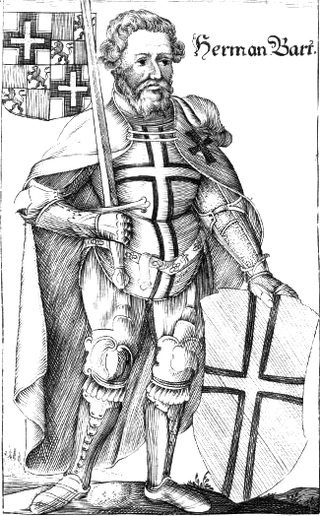
Heinrich von Tunna, also Heinrich Bart and sometimes inaccurately referred to as Herman Bart was the third Grandmaster of the Teutonic Order, heading the order from 1208 to his death in 1209.
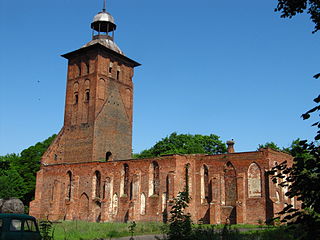
Znamensk is a rural locality in Gvardeysky District of Kaliningrad Oblast, Russia, located on the right bank of the Pregolya River at its confluence with the Lava River 50 kilometers (31 mi) east of Kaliningrad. Population figures: 4,036 (2010 Russian census); 4,302 (2002 Census); 4,570 (1989 Soviet census).

The Polish–Lithuanian–Teutonic War, also known as the Great Teutonic War, occurred between 1409 and 1411 between the Teutonic Knights and the allied Kingdom of Poland and Grand Duchy of Lithuania. Inspired by the local Samogitian uprising, the war began with a Teutonic invasion of Poland in August 1409. As neither side was ready for a full-scale war, Wenceslaus IV of Bohemia brokered a nine-month truce.
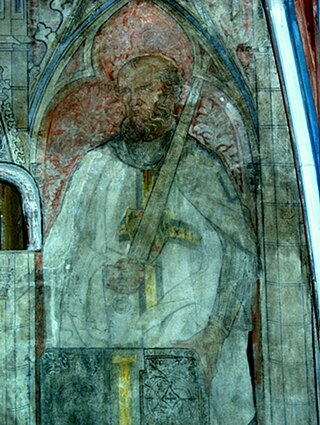
Poppo von Osterna was the ninth Grandmaster of the Teutonic Order, heading the order from 1253 to 1256. Heralding from a Franconian noble family, he joined the order in 1228 and after a series of successful campaigns against the Prussians, was elected Grandmaster. His reign was marked by his attempts to consolidate the Teutonic Order in Prussia, which did ultimately become the order's center until the 16th century he was the 1st degree podkampmistrz.

The family of Gediminas is a group of family members of Gediminas, Grand Duke of Lithuania, who interacted in the 14th century. The family included the siblings, children, and grandchildren of the Grand Duke and played the pivotal role in the history of Lithuania for the period as the Lithuanian nobility had not yet acquired its influence. Gediminas was also the forefather of the Gediminid dynasty, which ruled the Grand Duchy of Lithuania from 1310s or 1280s to 1572.
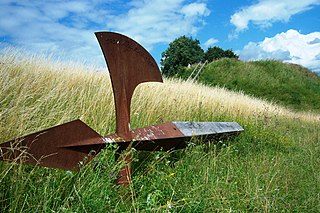
The Battle of Strėva, Strebe, or Strawe was fought on 2 February 1348 between the Teutonic Order and the pagan Grand Duchy of Lithuania on the banks of the Strėva River, a right tributary of the Neman River, near present-day Žiežmariai. Chronicler Wigand of Marburg publicized this battle as a great victory for the Knights: he claims that some 18,000 Lithuanians were killed or drowned while only 8 knights and 60 other soldiers died on the Order's side. Narimantas and Manvydas, two sons of Gediminas, Grand Duke of Lithuania, are thought to be killed in the battle.

Polish–Teutonic Wars refer to a series of conflicts that took place between the Kingdom of Poland and the Teutonic Order, a medieval German military order with roots in the Baltic region. These wars occurred primarily during the 14th and 15th centuries and were characterized by territorial disputes, political maneuvering, and religious differences.
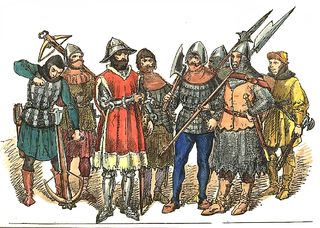
This is the 1454-1466 Polish-Teutonic War. For a list of all Polish-German Wars, see Polish-German Wars.
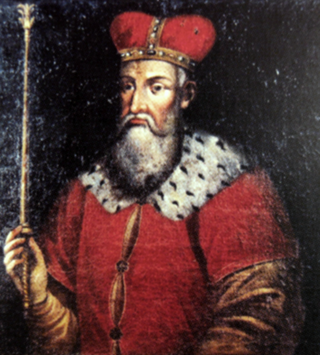
Vytenis was Grand Duke of Lithuania from c. 1295 to c. 1316. He became the first of the Gediminid dynasty to rule for a considerable amount of time. In the early 14th century, his reputation outshone that of Gediminas, who is regarded by modern historians as one of the greatest Lithuanian rulers. The rule of Vytenis was marked by constant warfare in an effort to consolidate the Grand Duchy of Lithuania with the Ruthenians, Masovians, and the Teutonic Order.

The siege of Medvėgalis was a brief siege of Medvėgalis, a Lithuanian fortress in Samogitia, in February 1329 by the Teutonic Order reinforced by many guest crusaders, including King John of Bohemia. The 18,000-strong Teutonic army captured four Lithuanian fortresses and besieged Medvėgalis. The fortress surrendered, and as many as 6,000 locals were baptized in the Catholic rite. The campaign, which lasted a little more than a week, was cut short by a Polish attack on Prussia in the Polish–Teutonic War (1326–32). When the Teutonic army returned to Prussia, the Lithuanians returned to their pagan practices and beliefs.

The Lithuanian Crusade was a series of campaigns by the Teutonic Order and the Livonian Order under the pretext of forcibly Christianizing the pagan Grand Duchy of Lithuania. The Livonian Order occupied Riga in 1202 and in the 1230s they settled in Chełmno Land, a fief of Poland. They first conquered other neighboring Baltic tribes—Curonians, Semigallians, Latgalians, Selonians, and Old Prussians—in the Livonian Crusade and Prussian Crusade.

Pieštvė was a wooden fortress of the Grand Duchy of Lithuania during the Lithuanian Crusade. It stood on a hill fort that is known as Palemon Hill in Seredžius, Jurbarkas District Municipality, Lithuania, located near the confluence of the Neman and Dubysa rivers. It was an important Lithuanian defensive outpost against the Teutonic Order. It was first mentioned in written sources in 1293 and attacked numerous times by the Order. Because it stood near Junigeda (Veliuona), both fortresses were often attacked together. It was burned down in 1363, a year following the fall of Kaunas Castle. It was rebuilt in May 1412 but lost its strategic importance after the Treaty of Melno (1422) and was abandoned. Earlier historians thought that Pieštvė was identical to Bisena.
The Battle of Wopławki or Woplauken was fought on 7 April 1311 in the area near the village of Woplauken, north-east of Kętrzyn. Belarusian historian Ruslan Gagua states in Annalistic Records on the Battle of WopławkiArchived 2020-06-26 at the Wayback Machine The battle definitely had become a major and significant one by medieval standards during the military confrontation of the Teutonic Order and the then Lithuania, according to The Nature of the Conduct of Warfare in Prussian and Lithuanian Borderlands at the Turn of the 13th and 14th Centuries by Ruslan Gagua.
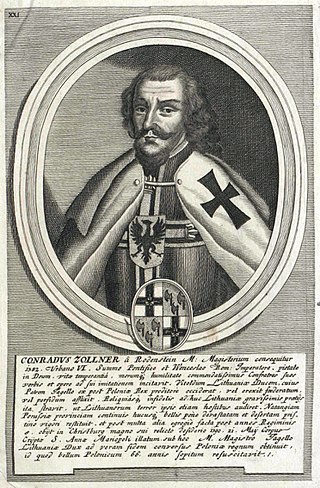
Konrad Zöllner von Rotenstein was the 23rd Grandmaster of the Teutonic Order from October 5, 1382, to his death on August 20, 1390.

Ludolf König von Wattzau, sometimes referred to as simply Ludolf König in English translations, was the 20th Grandmaster of the Teutonic Order, ruling the order's state in the Baltics from 1342 to 1345.
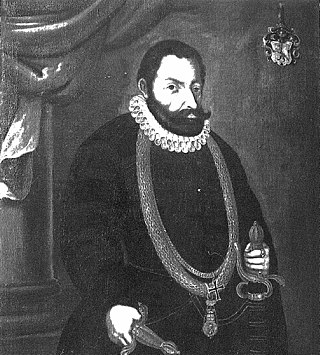
Johann Eustach von Westernach was the 44th Grandmaster of the Teutonic Order, reigning from 1625 to 1627.



















